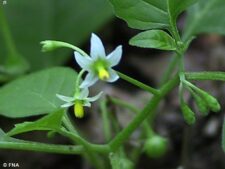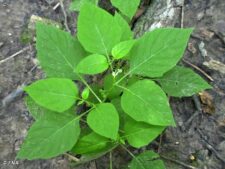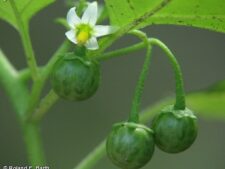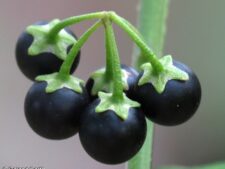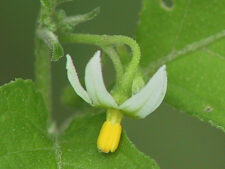
BLACK NIGHTSHADE
Solanum ptycanthum
NIGHTSHADE FAMILY (Solanaceae)
 Identification
Identification
- Flowering time - June, July, August, September, October
- Uncommon in disturbed sites at both FF and NW
- Small star-shaped flower with 5 swept-back petals and prominent yellow "beak"
- Hairless or, at most, sparsely hairy stems
This native annual may be up to 2 feet tall, but is usually shorter. Leaves are smooth and oval shaped with wavy margins (C). The small, star-shaped flowers have 5 swept-back petals and a prominent ‘beak’ made up of 5 yellow anthers around a central pistil (B,F). Fruit is a green berry (D) which turns black as it matures (E).
Uncommon in woodlands, along roadsides, trails and in other disturbed sites at both Fontenelle Forest and Neale Woods. This plant is a common ‘weed’ in area gardens and ornamental plantings. Flowering occurs from June to October.
Fruit and leaves contain the toxic alkaloid solanine, which is poisonous to humans and other animals. The fruit is said to be especially toxic when green. Leaf extracts have in the past been used as a folk medicine for external application to tumors and cancer.
A rare similar species, Hairy Nightshade (Solanum physalifolium), has dense sticky hairs on the stem and leaves quite different from Black Nightshade which is hairless or, at most, sparsely hairy.
The content of NatureSearch is provided by dedicated volunteer Naturalists of Fontenelle Forest who strive to provide the most accurate information available. Contributors of the images retain their copyrights. The point of contact for this page is: Roland Barth.

